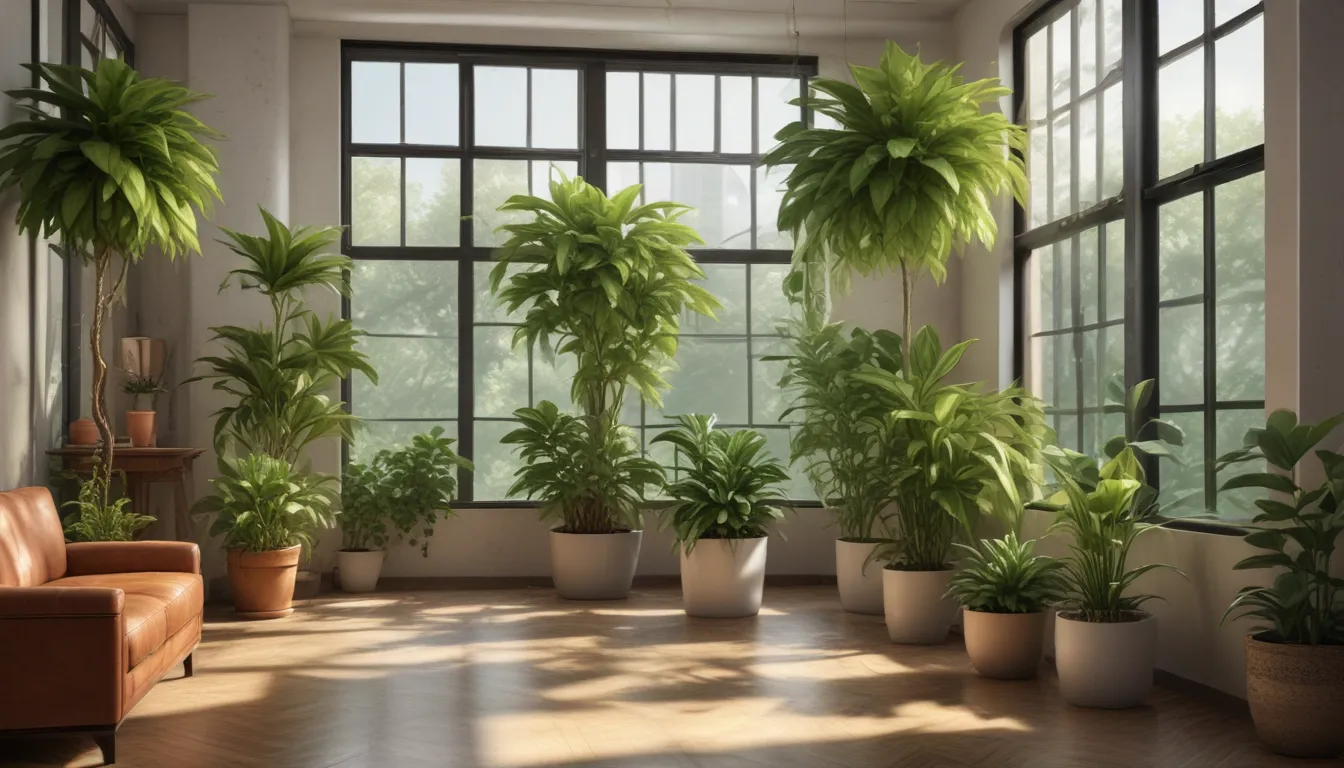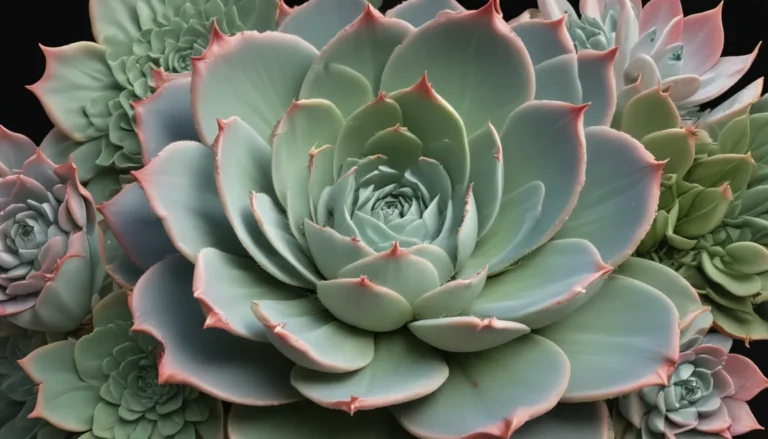The pictures we use in our articles might not show exactly what the words say. We choose these pictures to make you interested in reading more. The pictures work together with the words but don’t take their place. The words still tell you the important facts.
In today's fast-paced world, ensuring the air quality in our homes and offices has become more crucial than ever. With pollutants infiltrating our indoor spaces from various sources, it is imperative to find natural and effective ways to purify the air we breathe. Air purifying plants have emerged as a simple yet powerful solution to this pressing issue, offering not only aesthetic beauty but also tangible health benefits. In this comprehensive guide, we will delve into the world of air purifying plants, exploring their importance, benefits, best options, care tips, and future possibilities. Whether you are a seasoned plant enthusiast or just embarking on your green journey, this information will equip you with valuable insights to transform your living spaces into healthier, more pleasant environments.
Why Air Purifying Plants Are Essential
The need for clean indoor air has never been more critical, given the multitude of air pollutants we are exposed to on a daily basis. Air purifying plants play a pivotal role in improving indoor air quality by filtering out toxins and releasing oxygen through photosynthesis. Notably, NASA's Clean Air Study found that certain plants can eliminate up to 87% of air toxins within 24 hours. This astounding capability underscores the importance of integrating these green allies into our living and working spaces.
Aside from their air-cleansing prowess, air purifying plants are also remarkably low-maintenance, making them ideal companions for busy individuals or those with limited gardening experience. Plants like the Spider Plant exemplify this trait, showcasing both efficiency in purifying air and ease of care, thereby catering to a wide range of plant enthusiasts.
Best Plants for Air Purification
Not all plants are created equal when it comes to air purification. Some species have been recognized for their exceptional ability to filter out various harmful compounds, thus significantly enhancing indoor air quality. The Peace Lily, with its elegant white blooms, stands out as a powerhouse in removing chemicals like benzene, formaldehyde, and ammonia from the air. Meanwhile, Snake Plants, also known as Mother-in-Law's Tongue, excel in producing oxygen at night, making them ideal additions to bedrooms. Additionally, Bamboo Palms not only add a tropical vibe to any room but also excel in filtering out benzene, trichloroethylene, and formaldehyde.
How Air Purifying Plants Improve Health
The benefits of incorporating air purifying plants into indoor spaces extend beyond air quality improvement to encompass various health advantages. Studies have shown that having plants in workspaces can boost productivity by up to 15%, highlighting the positive impact of greenery on mental acuity and overall well-being. Furthermore, the presence of plants in hospital rooms has been linked to expedited recovery rates in patients, underscoring the therapeutic effects of nature on healing processes. Regular exposure to air purifying plants can also alleviate symptoms associated with poor air quality, such as headaches, dizziness, and respiratory irritation, fostering a healthier indoor environment.
Caring for Your Air Purifying Plants
While air purifying plants offer a plethora of benefits, they do require proper care to thrive and effectively purify the air. Key care tips include providing indirect light for most plants, avoiding overwatering by allowing the soil to slightly dry out between waterings, and regularly dusting the leaves to maintain optimal air-purifying efficiency. By adhering to these simple guidelines, you can ensure that your plants not only thrive but also continue to purify the air effectively.
Interesting Facts About Air Purifying Plants
Beyond their air-cleansing capabilities, air purifying plants harbor intriguing qualities that make them even more captivating. For instance, the Rubber Plant not only purifies the air but also adds a touch of drama with its nearly black leaves, enhancing interior decor. Aloe Vera plants, renowned for their air-purifying properties, can also treat cuts and burns with their healing gel. Moreover, plants like the Areca Palm excel in humidifying the air, making them ideal choices for dry climates. The Boston Fern, with its prowess in removing formaldehyde, adds a lush, green aesthetic to any space. Additionally, certain plants, such as the Gerbera Daisy, can enhance sleep quality by releasing more oxygen at night, promoting restful slumber.
Why Everyone Should Have Air Purifying Plants
The myriad benefits offered by air purifying plants position them as essential additions to any home or office. Apart from enhancing the visual appeal of a space, these plants contribute significantly to physical and mental well-being. By incorporating plants into living areas, individuals can reduce stress, promote a sense of well-being, and even lower noise levels by absorbing sound. Moreover, air purifying plants offer a cost-effective solution for improving indoor air quality compared to mechanical purifiers and create a microclimate that balances humidity, benefiting respiratory health.
The Future of Air Purifying Plants
As research on the benefits of air purifying plants advances, innovative trends in integrating these green companions into our living and working environments are emerging. Vertical gardens and living walls are gaining popularity as creative ways to infuse spaces with air purifying plants, blending aesthetics with functionality. Hydroponic systems are enabling efficient cultivation of these plants indoors without the need for soil, offering versatile solutions for various settings. Smart plant pots equipped with reminders for watering and light adjustments are simplifying plant care, making it accessible to all. Scientists are also exploring genetically modified plants with enhanced air-purifying abilities, paving the way for even more effective air quality solutions. The integration of air purifying plants into smart home systems for optimal care and air quality monitoring is on the horizon, promising a future where greenery and technology harmoniously coexist.
Breathing Life into Your Home with Air Purifying Plants
Air purifying plants transcend mere decoration; they are natural allies in creating a healthier living environment. With their capacity to filter pollutants and improve indoor air quality, these green wonders silently enhance your well-being. Whether it's the resilient snake plant or the lush peace lily, each plant brings unique benefits that seamlessly blend aesthetics with functionality. Embrace these plants to invite nature's own purifiers into your home, fostering a sanctuary that not only looks exceptional but also feels rejuvenating. Kickstart your green journey today and transform your living spaces into havens of purity and tranquility, one plant at a time. Every leaf counts when it comes to making a positive impact on your health and surroundings.
Conclusion
In conclusion, the adoption of air purifying plants offers a multitude of benefits for indoor environments, ranging from improved air quality to enhanced physical and mental well-being. By understanding the importance of these plants, selecting the best species for air purification, implementing proper care practices, and exploring future possibilities, individuals can create healthier, more inviting spaces that promote holistic wellness. Embrace the green revolution today and embark on a journey towards a cleaner, more vibrant living environment with air purifying plants as your trusted companions. Let nature breathe life into your home, revitalizing your surroundings and revitalizing your health in the process.






